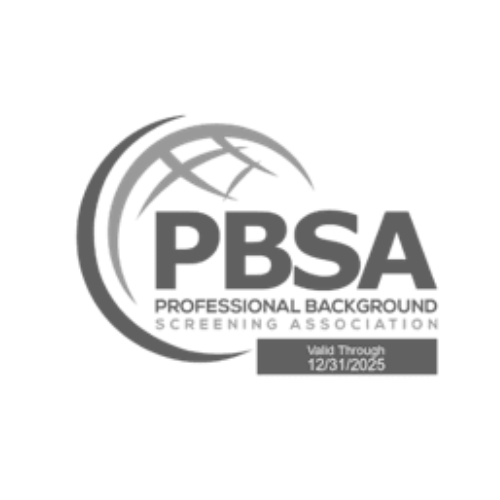For many HR leaders, compliance is assumed to be the non-negotiable baseline, background checks, policy sign-offs, onboarding documents, annual training, and audit trails. But the reality inside most organisations tells a different story. Even with the boxes ticked, things still go wrong. Not always dramatically, but often enough to raise eyebrows.
A late disclosure. A role filled without the right scope of vetting. A vendor granted access without a proper record. A compliance failure that technically shouldn’t have happened, and yet it did.
These aren’t outliers. They’re signals that the approach to compliance is broken.
And it’s not that HR doesn’t care or isn’t working hard enough. It’s that the model is reactive, fragmented, and too often designed around documentation, not decision-making.
Let’s break this down.
The Illusion of Compliance: Why It Looks Fine Until It Isn’t
Most compliance frameworks in HR are designed for audit-readiness. On paper, they check out. Every candidate completes their forms. Policies are signed. The required training is delivered and logged.
But if you step back and ask: Are these processes reducing organisational risk? Are they being used to drive better hiring decisions, workforce planning, or role design? The answer is often no.
Because here’s the truth: compliance is only effective when it’s operationalised. And that’s where most systems break down.
Where Compliance Actually Breaks in Practice
Here’s how the disconnect tends to show up on the ground, especially in large, cross-functional, or fast-moving organisations:
1. Compliance Doesn’t Account for Role-Based Risk
Most compliance processes are one-size-fits-all. The same checks, the same onboarding flow, the same document templates, regardless of the role.
But not every position carries the same exposure. A junior marketing hire doesn’t need the same scrutiny as a finance controller managing vendor payments across borders. Yet, both go through the same onboarding checklist.
This mismatch leads to what looks like a compliant process but fails to cover actual risk.
2. No Shared Ownership Between Functions
Compliance, in practice, spans multiple teams: HR, Legal, Finance, IT, Procurement. But ownership is rarely clear.
If a contractor slips through without being fully vetted, was that an HR issue or an operations oversight? When a policy is breached, who tracks the resolution? These aren’t theoretical questions; they’re gaps that come up during investigations, audits, and escalations.
Without clarity on who does what, and when, compliance defaults to finger-pointing.
3. Issues Are Logged, But Not Learned From
When something goes wrong, many teams fix the incident but don’t address the process that allowed it to happen. The problem? The same issue reappears six months later, in a different business unit, under different circumstances.
A flagged background check, a missed reference, a training module no one completes, these are often treated as one-off events. Rarely do they trigger a redesign of the underlying system.
That’s what makes it fragile.
Strategic Compliance Looks Very Different
A strategic approach doesn’t just ask “Are we compliant?” It asks:
- “Where are we exposed?”
- “Who owns this risk?”
- “What processes aren’t keeping up with how we actually work?”
Here’s how that plays out.
Step 1: Redesign Checks Based on Role Risk
Not every hire needs the full suite of verification. But high-exposure roles, those dealing with finance, legal agreements, access control, or client relationships, do.
That means:
- Sanctions and PEP screening for finance and leadership roles.
- Credit checks for those handling payments or procurement.
- Criminal checks scoped by local law, role sensitivity, and regulatory requirements.
- Regular audits for contract and vendor hires with systems access.
Build a risk framework that maps checks to roles, not just levels.
Step 2: Establish Shared Accountability
Compliance should not be a siloed responsibility. It should be mapped across HR, Legal, Operations, and Security.
- Who ensures a vendor is cleared before access is granted?
- Who triggers additional checks when someone is promoted into a sensitive role?
- Who follows up when training isn’t completed?
Documenting these answers and updating them regularly is what creates resilience.
Step 3: Track Trends, Not Just Completion
Many teams measure compliance as a checkbox: completed vs. not completed. But that won’t show you why things are breaking.
Instead, track:
- Delays in clearance or onboarding, what’s causing them?
- Repeat non-compliance in certain functions or regions.
- Roles where policy violations are concentrated.
- Background checks that are routinely scoped too narrowly.
This is where real insight comes from, and where prevention starts.
What Happens When Compliance Is Strategic
When compliance becomes embedded in workforce planning, hiring decisions, and risk reviews, a few things change:
- Role scoping improves. High-risk positions are filled more thoughtfully, with fewer downstream surprises.
- Audits become less reactive. You’re not waiting for regulators or incidents to flag issues; you’re spotting patterns early.
- Business partners trust HR more. Because the team isn’t just enforcing rules, it’s helping reduce risk in a way that supports business priorities.
Strategic compliance isn’t louder. It’s smarter.
How to Start Building That Model
If your current compliance framework is mostly documentation, here’s a reset plan that brings you closer to operational clarity:
1. Run a Role-Risk Audit
Start with the top 20 roles in your organisation. Ask:
- What exposure does this role carry, legal, financial, reputational?
- What’s the current compliance process tied to it?
- What checks should be there that are missing?
You’ll quickly see where the real risk lives and where your framework doesn’t match.
2. Build Escalation Pathways
What happens when something flags? Create a process that routes issues to the right people fast and tracks closure timelines. Delays in escalation create risk. Clarity reduces it.
3. Revisit Your Verification Scope
Many HR teams assume background checks are all-inclusive. They’re not.
- Ask your provider what’s included.
- Check if sanctions, PEP, or adverse media are scoped.
- Map them to your risk framework.
If what you think is being checked isn’t actually happening, fix it now, not after something goes wrong.
4. Build a Feedback Loop
Every compliance issue should trigger a policy/process review. Was it a one-off? Or is the system flawed?
If the issue keeps repeating, the process, not the person, needs to change.
Bottom Line
Compliance isn’t just about protecting the company from fines or audits. It’s about making sure the people, systems, and decisions that shape your business are protected from predictable failure.
That doesn’t come from more forms. It comes from designing systems that match reality, not just regulation.
The best HR leaders aren’t just guardians of policy. They’re architects of systems that keep the organisation safe, prepared, and smart.
















